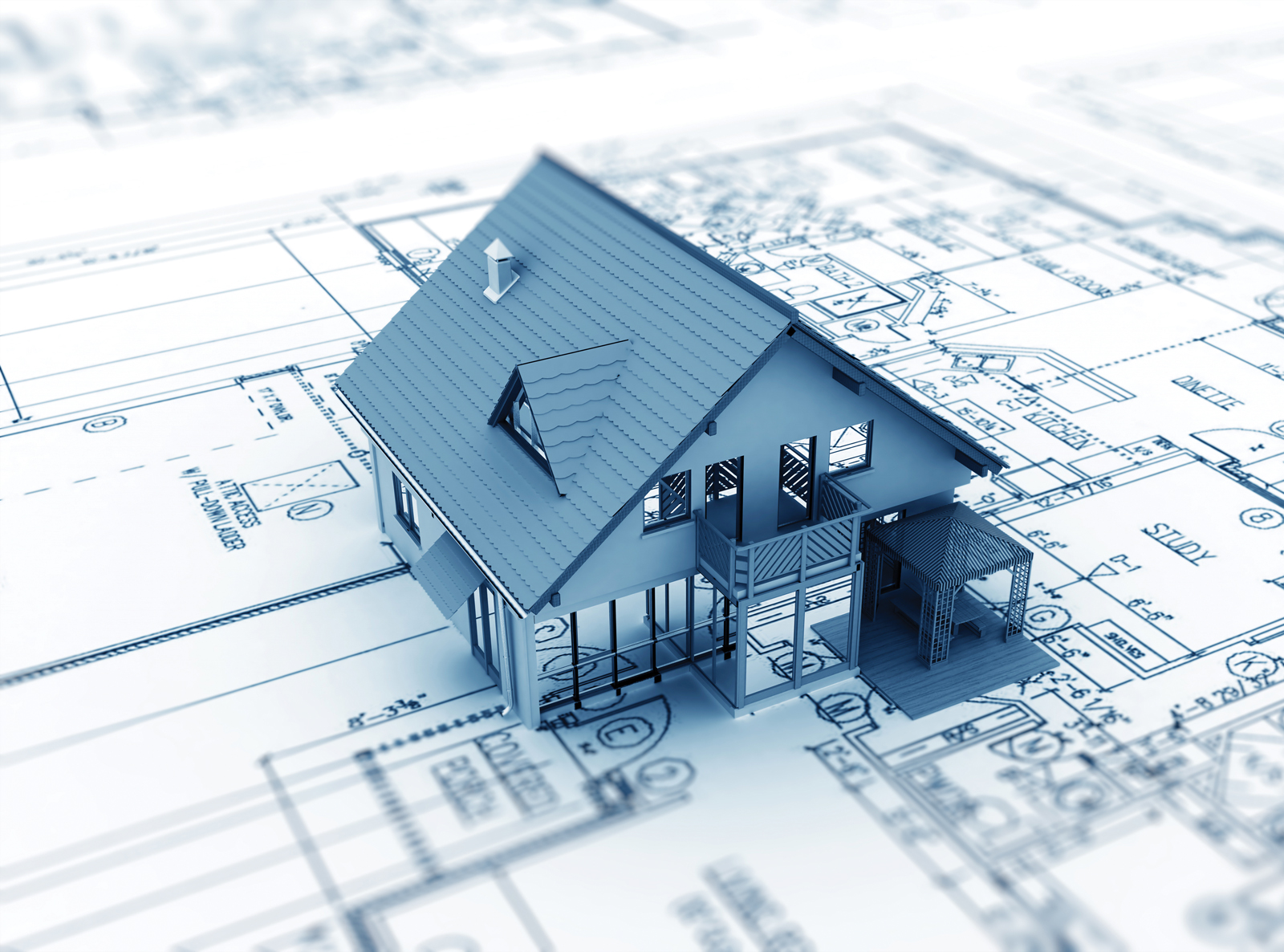
BY MARCUS HUMBERG, MARTHA FAUST, CHERYL ANN BISHOP, AND LYN HIKIDA
In the early 1940s, a small dry-cleaning business, Mt. Baker Cleaners, opened in South Seattle. Several years later, a run-of-the-mill corner gas station set up shop across the street. For decades, it was business as usual. But as the years wore on, these small businesses were slowly creating a big environmental problem. Dry cleaning chemicals, solvents, and petroleum found their way into the soil, slowly and silently leaching down to the groundwater. By the mid-2010s, the dry cleaner had moved to a new location and the gas station closed after changing hands many times. Both lie vacant since, leaving an array of environmental problems yet to be discovered.
This is a typical story of a brownfield. While the name itself inspires images of fenced off, unused grassy acres, brownfields are often just run-down, abandoned businesses or dusty gravel lots with crumbling buildings. Brownfields can seem like a Pandora’s box, just waiting to unleash their toxic—and potentially costly—secrets to the unsuspecting property buyer. Or they could be nothing more than an unused property with little to no environmental contamination on the surface, but with no one willing to pay to find out.
While there is no one definition that can describe a “typical” brownfield, the problems faced are the same: How can you clean it? How can you redevelop it? And who’s going to pay for it? The next question, of course, is what do brownfield cleanups have to do with affordable housing? What sane planner or project manager would want to combine the complexity of both of these issues? After all, how do you redevelop a brownfield property with unknown costs and uncertainty when you’re already trying to navigate limited housing budgets, grant requirements, and strict timelines?
The current need for affordable housing for low- and middle-income families has reached crisis levels in many areas. Cities struggle with finding available land, while costs continue to rise. It’s easy to see where housing demand has outstripped supply. And it’s happening in urban, suburban, and even rural markets, driving up home prices and rents faster than incomes are rising. Formerly affordable neighborhoods are gentrifying, displacing lower income families, leaving them nowhere to go.
Here lies the conundrum—brownfields are developable land in potentia, but can take a lot of time, money, and work to be economically viable again. Affordable housing is greatly needed, but it’s becoming more difficult to build economically and administratively – especially in the current real estate markets many areas across the country are experiencing.
So, how can local governments leverage the opportunities brownfields offer while minimizing their drawbacks in order to build affordable housing—all without busting budgets or timelines?
When faced with public policy challenges of this magnitude, it takes a lot of dedication and determination to blaze a trail through the twin minefields of brownfields and affordable housing. But success can be found where others are unwilling to venture. Enter the innovators.
Schmidt Artist Lofts in Saint Paul, Minnesota
In the eastern half of the Twin Cities of Minneapolis-Saint Paul, lies Ramsey County. It includes the bustling capital city of Saint Paul and is the only county in Minnesota that has been fully built out. Even before the recent shift in market preferences toward infill development, county planners realized that redevelopment of existing properties was the only path to create new housing, jobs, and even green space. And this redevelopment, by definition, required tackling costly environmental legacy issues head on.
In 1997, Ramsey County, along with neighboring Hennepin County—home of the other twin city of Minneapolis—approached the State Legislature to help them establish a special fund. The goal of this fund was to offset the costs of environmental and brownfield remediation and enable urban land recycling for a range of new uses, including affordable housing.
By 2004, Ramsey County launched their new Environmental Response Fund, funded by a mortgage registry and deed tax. This tax collects one dollar for every $10,000 in value for every property transaction in the county—around $25 for the average $250,000 home. Funding is split equally between the city of Saint Paul and its surrounding suburbs, providing a critical tool in reviving the urban and suburban core of the Twin Cities Metropolitan Area.
The philosophy of the Environmental Response Fund is to be the last public money into a project, helping leverage private investment into brownfield properties, and increasing the county’s tax base. Many of these brownfields are located next to existing infrastructure, transit networks, and other services, making them especially desirable for redevelopment. Since its inception, the fund has helped remediate 330 acres of land, assisted the development of over 600 affordable housing units and 775 market-rate housing units, creating over 4,370 jobs.
Patching an Urban Tapestry
In the heart of the working-class West Seventh neighborhood, just southwest of downtown Saint Paul, stands the towering, castle-like Bottling House and Brew House. This former Schmidt Brewery complex has been given a new life as affordable live-work units for area artists.
For over 100 years, the 18-acre site was home to a series of breweries and at one time was the largest brewery in Minnesota. Shortly after Prohibition, it was serving thirsty Minnesotans as the nation’s seventh-largest brewery. But in the face of increasing competition, the facility shuttered in 2002. Following a short run as an ethanol production facility, the property was slated to be razed to make room for a Walmart, but ultimately sat vacant for over a decade. The contamination from a century of industrial use stymied any potential development. Enter local affordable housing developer, Dominium, who envisioned a new transit-oriented use for the property, drawing on its historic character and iconic architecture.
The first step in redevelopment required remediation of a myriad of environmental conditions, including soil contaminated with poly aromatic hydrocarbons (PAHs), lead, and arsenic. Removal of underground storage tanks, significant asbestos and lead-based paint abatement, as well as installation of sub-slab vapor systems, would be required for all of the new residential uses. The total remediation costs ran upwards of $3.5 million. Ramsey County contributed $300,000 in Environmental Response Funds, other remediation grants had to be acquired, and the developer covered the remaining balance.
One of the unique steps in this project also included the historical designation of the site. Once recognized as one of “Minnesota’s 10 most endangered historic places,” the former brewery is now part of a new historic district listed on the National Register for Historic Places. As an adaptive reuse, the $130 million project created 247 individually unique one, two, and three-bedroom rental lofts and flats, and 13 three-bedroom townhomes on a property adjacent to the bottling house. These units are not only affordable, but attractive to artists with a $42,000 maximum income restriction for a single-person household. Onsite amenities include paint, clay, sound, and dance studios; a performance space; and a rooftop deck with views of the Mississippi River and downtown Saint Paul. The development was fully leased before opening in 2014, and remains 100 percent leased today.
Perhaps just as important as the successful adaptive reuse of the Schmidt Brewery complex is the catalytic effect the project has produced. Overnight, the restoration of the property injected new energy and historic pride into the neighborhood. In 2018, a 33,000 square-foot Keg & Case food hall opened in a former storage building in the new historic district, filled with local restauranteurs, vendors, and fittingly, a craft brewery. Keg & Case hosts a weekly neighborhood farmers market and was recently named the best new food hall in America by USA Today.1
The Schmidt Brewery redevelopment illustrates the opportunities that brownfield sites hold for potential reuse for affordable housing. Success in this case required creative vision, persistence, and public-private partnerships to overcome the significant cost challenges. Projects such as the Schmidt Artist Lofts not only provide critically needed, transit-accessible affordable housing, but also fill holes in the urban fabric, and can even spur an economic revolution through strategic redevelopment.
The Maddux in Seattle, Washington
When it comes to overheated real estate markets, Seattle and surrounding King County is still white-hot. Though prices are cooling, the median home value in King County has risen from $350,000 in 2011 to $625,000 in 2019.2 Residents are being priced out of the market by a flood of high-paid tech workers moving to the area. This influx has pushed Seattle’s lower-paid workers, who often rent their homes, to the brink—or worse, onto the streets.
One could think it odd then that only a few miles from downtown there are boarded-up businesses and vacant properties. Surely these lots would be quickly swallowed up and developed in such an insatiable, high-priced, high-demand market. But even white-hot real estate prices can’t overcome that which lies beneath.
Creating Successful Partnerships
In 1988, Washington’s citizens passed Initiative 97 establishing a statewide environmental cleanup law, the Model Toxics Control Act (MTCA).3 This act installed a tax on petroleum products, certain chemicals, and pesticides to fund cleanups across the state and prescribes the required cleanup process. The Washington State Department of Ecology (Ecology) manages the majority of MTCA funding, and regulates the cleanup process for public and private properties across the state.
Until recently, MTCA cleanup funds could not be granted to private parties; they were instead routed only through local governments. When Ecology recently became involved with affordable housing-related cleanup, this limitation inspired two new variants of its main grants—Integrated Planning Grants (IPGs) and Remedial Action Grants (RAGs). These new grants support housing and community planning and cleanup activities for brownfield sites that deliver affordable housing as an end use. They can be used by local governments and tribes, as well as nonprofit and private entities.
IPGs provide $200,000–$300,000 to support planning, investigation, and public involvement related to a potential cleanup. This early funding can produce a much bigger return on investment later in the project. Whether that planning is for site assessment, or other innovative uses that benefit the public, the key is setting the stage early, which gives projects a strong foundation for later success. Affordable housing-related RAGs have no award limits and help investigation and cleanup of brownfield sites.
Inspiring Innovation in Affordable Housing4
In 2013, MTCA was modified to allow local governments new ways to use cleanup funds, including the creation of a Redevelopment Opportunity Zone (ROZ).5 Within a ROZ, the local government can create a brownfields renewal authority, a municipal authority that has broad powers to help manage and fund the cleanup and redevelopment of brownfields. The ROZ also allows Ecology to connect prospective purchasers and developers with owners of brownfield properties and provide funding for parts of the project that are not directly involved with cleanup.
The city of Seattle voted in 2017 to create a ROZ encompassing two major cleanup sites—the abandoned Mt. Baker Cleaners and a run-down, former gas station and auto repair shop owned by Phillips 66. These derelict properties occupy an otherwise desirable location—a prominent corner, in real estate parlance—within walking distance of light rail, a bus station, and green space, mere minutes from downtown. It’s almost everything you could want for affordable housing except, of course, for the cleanup price tag.
To kick-start the project, in 2017 Ecology offered $400,000 to help assess the contamination on the site and connect the property owner to a nonprofit developer, Mt. Baker Housing. This early funding spurred the project forward, and ultimately inspired future innovation. The environmental assessment showed the extent of the property’s toxic unknowns—dry-cleaning solvents (percholorethene and trichloroethene) and petroleum contaminants (gasoline, diesel, benzene, and heavy oil) in the soil and groundwater at levels below what had been anticipated, bringing the cleanup cost estimate from as high as $31 million to around $7 million.
Using this new information, the Mt. Baker housing authority went to work, securing $56 million in private, state, and federal funding. With all the details in place, the state legislature approved $6.2 million to fund the site cleanup. In 2019, Mt. Baker Housing finalized the purchase agreements and will begin construction of the mixed-use project, including 144 affordable housing units and ground-level commercial spaces, which is essential in an area with limited retail services.
In the realms of environmental justice, cleaning up properties like Mt. Baker Cleaners in lower-income neighborhoods is a step toward a more equitable and sustainable future. Contamination and long-abandoned buildings depress property values and affect residents’ social and physical wellbeing. However, brownfield properties often attract projects that can easily price out the people who stand to benefit the most—the residents who lived with the contamination and lower property values for so many years. Part of the success of the Maddux hinged on placing restrictive affordable housing covenants on the land, protecting the neighborhood from the pressures of market-rate development and gentrification.
Though providing funding through a ROZ worked for the Maddux, it was an inefficient way of providing direct funding to non-government entities. Given the success that early assessment and planning had on the Maddux, Ecology established the Healthy Housing Remediation Program, a pilot project exploring direct funding options for private, tribal, and non-profit agencies that connect the cleanup of contaminated sites to redevelopment as affordable housing.6 This program has already produced proposals for 110-units of affordable housing in Kennewick, Washington; and a mixed-use, seven-story waterfront development in Bellingham, Washington, that includes affordable apartments and a campus with a professional communal kitchen and food truck court.
Jordan Downs in Los Angeles, California
During the height of World War II, the city of Los Angeles was going full steam for America’s war effort. At the same time, it was experiencing a housing crisis due to the influx of workers recruited by the defense industry. In the Watts neighborhood of South Los Angeles, the city contracted to build Jordan Downs, a 34-acre temporary housing development with hundreds of low-rise, barracks-style buildings, next door to a steel mill built to support the war. According to the Los Angeles Times, Jordan Downs was dedicated in 1944 for the city’s war workers including members of minority racial groups that have faced a critical housing problem.7 In 1955, this cinder block “temporary housing” was converted into 700 units of low-income public housing. Over the decades, economic depression, racial conflicts, and disinvestment in the community contributed to its physical and social decline.
Bifurcating the Jordan Downs neighborhood today is a 21-acre industrial property that once housed the steel mill. Over time, the site was repurposed from steel manufacturing and truck repair to waste handling and storage. In 1996, environmental studies were conducted that identified significant contamination. Recognizing an opportunity to eliminate this dysfunctional property so close to their public housing, the Housing Authority of the City of Los Angeles (HACLA) acquired the site in 2008 with the intent to remediate it for future use.8 The California Department of Toxic Substances Control (DTSC) also gained oversight to ensure proper cleanup and abatement of the property.
Delivering Environmental Justice
In 2012, the nonprofit BRIDGE Housing, along with The Michaels Organization, was selected by HACLA to develop and lead the revitalization of Jordan Downs.9 Ultimately, this ongoing comprehensive, long-term effort will rebuild all 700 units of distressed public housing and create an additional 650 new homes with a range of affordability, along with new roads and infrastructure, community facilities, retail, parks, and open space. While significant remediation was required, putting the old steel mill site into service as part of the Jordan Downs master redevelopment would achieve several important goals:
• Reknit the physical community, as the vacant parcel splitting Jordan Downs created turf wars and divisions between residents of the north and south sides.
• Allow the construction of the first 250 apartments and create replacement public housing units mitigating displacement of current residents.
• Enable the extension of Century Boulevard, a major thoroughfare, to reconnect Jordan Downs with the surrounding neighborhood.
• Provide land for 115,000 square feet of retail and commercial space, which is vital in a neighborhood that has had a dearth of retail services and jobs.
• Eliminate severe blight of the industrial parcel.
• Eliminate toxins immediately adjacent to Jordan High School, the public housing complex, and the community’s recreation center.
The DTSC approved a remedial action plan for the former steel mill site in 2014, and remediation work began in April 2015. Based on earlier environmental studies, the conclusion was reached that only certain areas of the site had contamination requiring remediation, anticipating that the cleanup would take only six months. However, it soon became evident that heavy metals and toxic contamination were spread across the entire site. Engine oil, diesel and gasoline, paint thinners, trichloroethylene (an industrial solvent), and polychlorinated biphenyls (PCBs) had leached into the soil and groundwater. Contamination in some areas extended to a depth of over 20 feet, requiring the removal of more than 220,000 tons of impacted soil. Backfilling the space with clean soil has ensured safe occupancy for future uses. Due to the expanded scope of cleanup, the remediation costs rose to $31 million, a significant investment in a community that had been neglected for decades.
In 2016, the remediation was completed and DTSC issued a “no further action” letter for the residential parcels, allowing construction of the first residential phases, the Century Boulevard extension, and retail spaces.
As of fall 2019, BRIDGE’s 115-unit Cedar Grove at Jordan Downs is now leasing. Designed to a LEED Silver certification level, the new apartments will serve existing public housing residents and other low-income families. Retail establishments are nearing completion, and the new Century Boulevard extension connects the community to the services and amenities of greater Los Angeles.
The remediation and reuse of the 21-acre brownfield parcel was the critical first step in a multiphase process that is transforming Jordan Downs into a vibrant—and healthier—mixed-use community where thousands of residents will be able to thrive.
ENDNOTES AND RESOURCES
1 St. Paul’s Keg and Case named Best New Food Hall, USA Today, January 18, 2019, Accessed at https://www.10best.com/awards/travel/best-new-food-hall/.
2 Northwest Multiple Listing Service Data, 2011–2019.
3 https://ecology.wa.gov/Spills-Cleanup/Contamination-cleanup/Rules-directing-our-cleanup-work/Model-Toxics-Control-Act
4 This section adapted in part from an article published in the Seattle Daily Journal of Commerce. Article is attributed to Bob Warren, but was ghostwritten by Cheryl Ann Bishop. “State helps turn brownfields into affordable housing,” Daily Journal of Commerce, September 27, 2018, https://www.djc.com/news/en/12114941.html.
5 https://fortress.wa.gov/ecy/publications/SummaryPages/ 1809048.html
6 https://fortress.wa.gov/ecy/publications/SummaryPages/1809051.html
7 Dedication of Housing Today (1944, May 28), Los Angeles Times, retrieved from http://newspapers.com.
8 http://uli.org/wp-content/uploads/ULI-Documents/2009JordanDownsLAReport.pdf
9 https://bridgehousing.com/press_releases/los-angeles-celebrates-groundbreaking-of-first-residential-phase-of-jordan-downs-revitalization/

MARTHA FAUST is the redevelopment manager, Ramsey County, Minnesota (martha.faust@co.ramsey.mn.us).

MARCUS HUMBERG is the communications specialist, Washington State Department of Ecology, Toxics Cleanup Program, Olympia, Washington (marcus.humberg@ecy.wa.gov).

CHERYL ANN BISHOP is the communications manager, Washington State Department of Ecology, Toxics Cleanup Program, Olympia, Washington (cherylann.bishop@ecy.wa.gov).

LYN HIKIDA is vice president of communications, BRIDGE Housing, (lhikida@bridgehousing.com).
New, Reduced Membership Dues
A new, reduced dues rate is available for CAOs/ACAOs, along with additional discounts for those in smaller communities, has been implemented. Learn more and be sure to join or renew today!
